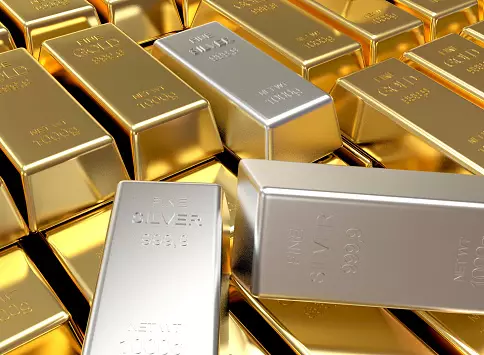In recent weeks, precious metals such as gold and silver have experienced turbulent price action, largely influenced by the evolving outlook for the US dollar and Federal Reserve policies. As of late September 2025, the metals’ rally earlier this year seemed unstoppable, fueled by doubts over the Federal Reserve’s independence and its commitment to fight inflation. However, the renewed strength of the US dollar signals a potential shift in momentum, emphasizing the importance of understanding the underlying macroeconomic dynamics at play.
This renewed US dollar resilience isn’t coincidental. It stems from a complex interplay of Federal Reserve rhetoric, economic data releases, and investor sentiment. Following a period of dovish tone steered by Fed officials like Bowman and Waller—appointees historically seen as more sympathetic to market-friendly policies—there has been a noticeable pivot. Recent employment figures, including softer Non-Farm Payrolls and downward revisions to Labor Department data, have helped restore some confidence in the Fed’s ability to tighten monetary policy. Consequently, the US dollar has regained some of its lost ground, which directly presses on gold and silver prices.
From a technical perspective, the charts reveal a nuanced picture. Gold’s recent high of $3,707, along with silver’s 18.67% rally from July lows, showcase resilience and strong momentum. But these heights are accompanied by warning signals: overbought RSI levels and broken upward trendlines suggest a possible pause or correction ahead. The market appears to be at a crossroads, balancing between a continued run on inflation hedges and signs of potential retracement as short-term buying momentum stalls.
Technical Analysis: A Cautionary Tale of Overextension and Potential Reversal
Looking deeper into the charts, both gold and silver are displaying signs of technical fatigue, yet the overall trend remains cautious and watchful. Gold’s daily chart shows overbought conditions beginning to ease, with RSI turning downward. A break above or below key support zones would be decisive: a decisive move below support levels around $3,620–$3,630 could suggest short-term weakness, while a break above the resistance at approximately $3,675 would affirm the bullish trend continuation.
Similarly, in silver, momentum seems to be faltering within the current upward trajectory. Although prices have temporarily broken out of their short-term upward channel, resistance at around $42—corresponding partly to the upper bounds of longer-term channels—may hinder further gains. Divergence in RSI hints at an intermediate correction, reminding traders that markets rarely move in a straight line. For silver, key support zones lying between $39.50 and $40, as well as $37.50, form critical levels for traders to monitor.
What these technical signals emphasize is that while the metals remain near recent highs, a cautious stance is warranted. The overall technical environment suggests a consolidation phase, perhaps setting the stage for a brief pullback before another attempt at pushing higher. This is especially pertinent considering the macro backdrop: a strengthening dollar, potential rate hikes, and shifting Fed narratives could all influence the metals’ direction moving forward.
The Broader Implications: Is the Bullish Run Losing Steam?
The rally in gold and silver earlier this year was arguably driven more by macroeconomic fears and uncertainties rather than pure technical strength. Investors sought safe havens as inflation alarm bells rang loud, pushing these metals to record levels. However, as the US dollar begins to regain footing, the near-term outlook for precious metals becomes more complex.
A stronger dollar often correlates with softer gold and silver prices because it makes dollar-denominated commodities more expensive for foreign buyers. It also signals a potential shift in market sentiment—the possibility that inflation fears may be easing, or that traders believe the Fed might tighten sooner rather than later. This prospect could lead to corrective phases, especially if the current levels are deemed overextended or driven by speculative exuberance.
Yet, optimism remains. Some market observers argue that gold and silver still have room to run if inflation persists or geoeconomic tensions escalate. However, the current technical landscape suggests that investors should not be complacent. The risk of a correction—particularly around Fibonacci-extensions near $3,750–$3,815 for gold and resistance at $42–$44 for silver—is palpable.
It may be tempting to view this phase as a mere pause before fresh highs. Nonetheless, history teaches that markets often require periods of consolidation to pave the way for sustainable advances. The critical question for traders and investors alike is whether the recent highs are just the beginning of a new bullish chapter, or the last hurrah before a correction?
Strategic Outlook: Navigating Uncertainty with Discipline
The recent strength of the US dollar and the technical signs of slowing momentum in gold and silver demand a disciplined approach. While bullish scenarios are still on the table, the mounting technical resistance and macroeconomic headwinds advise caution.
For traders, it makes sense to watch support levels closely—around $3,620–$3,630 for gold and $39.50–$40 for silver—and be prepared for potential short-term corrections. Breakouts above recent resistance levels could accelerate gains, but failure to hold support might signal a deeper retracement.
Investors should also remain alert to evolving Fed communications and economic data releases, which could swiftly alter the landscape. The metals market, often driven by sentiment and macro cues, demands a flexible stance, balancing optimism with prudence. Ultimately, the resilience of gold and silver may hinge on the broader economic narrative—whether inflationary concerns persist or ease, and how aggressively the Fed proceeds with monetary tightening.
As the year progresses, understanding these complex dynamics will be key to capitalizing on opportunities while avoiding pitfalls in the ever-shifting realm of precious metals trading.

